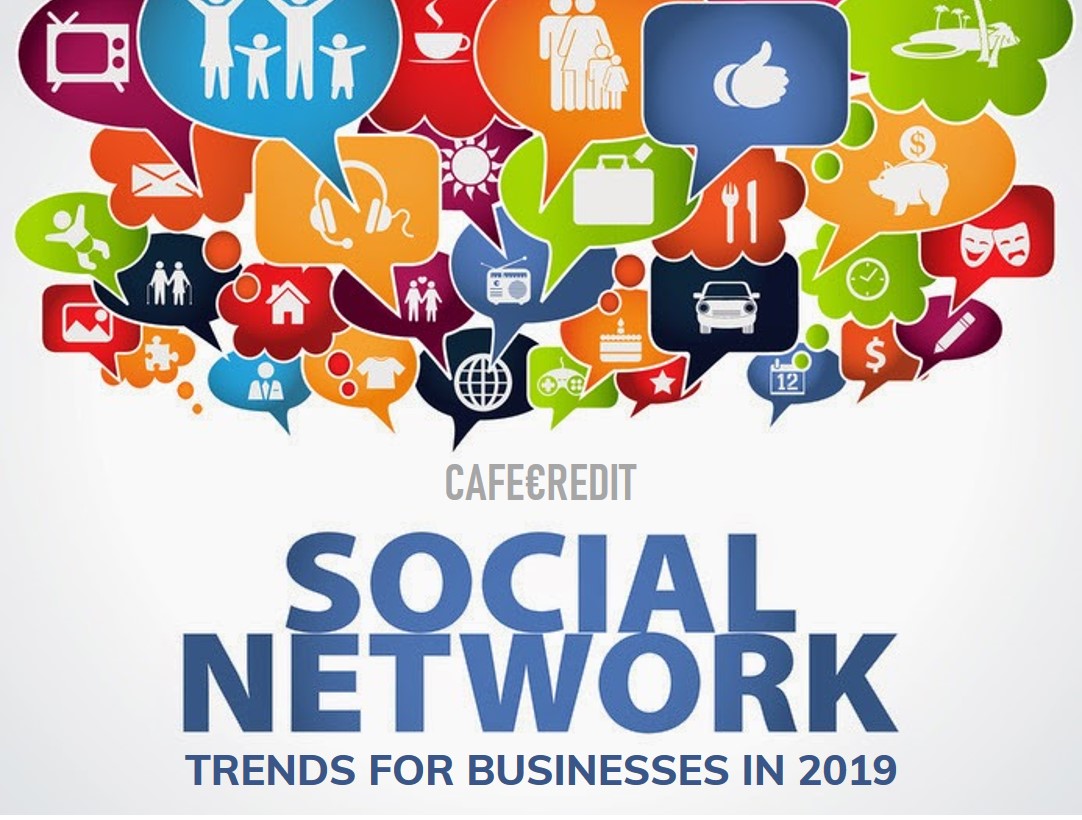2018 is a volatile year for social networking sites with privacy invasion and user data collection at Facebook, which drew a lot of attention from governments around the world.
2018 is a volatile year for social networking sites with privacy invasion and user data collection at Facebook, which drew a lot of attention from governments around the world.
Many federal reviews have been conducted, while users have to ponder the tremendous impact of social networks on politics, culture and the community.
What does this mean in 2019? How will users and social networks react to these seismic changes? How will businesses use social networks to change user privacy and true connection?
According to the Annual Social Trends Report, a team of professionals did a survey on more than 3,000 businesses, from small-scale agencies to large corporations, to see how these businesses plan to adopt towards social networks in 2019.
Here are some of the most striking findings that will show us what is awaiting next year.
#1 "Real world" returns
Scandals in 2018 have created a big impact on users' beliefs on social networks.
According to Edelman’s report, 60% of people no longer place their trust on social networking companies. In the context of "fake news" and data hackers, users increasingly lose faith with "influencer", including celebrities and media characters.
In contrast, beliefs return to friends, family and relatives on social networks as well as reputable people other than their "follower" numbers.
For businesses on social networks, this creates a challenge for them in 2019.
Using social networks as an advertising channel containing "clickbait" (Clickbait is a text link or thumbnail designed to entice users to follow that link and read, view or listen to the linked online content. - (according to Wikipedia) and flashy promotion codes will no longer be popular and suitable to the user's tastes.
Instead, progressive businesses will be less focused on maximizing access in 2019 and moving into meaningful, clear interactions.
50% of survey respondents agree that personalizing content will be a big challenge.
Brands are building focused communities, sharing insightful and relevant content, then allowing users to link to other users.
#2 " Stories" are the key
The changes of personal interactive on social networks are reflected in the type of shared content.
Instead of posting on newsfeed (News Feed is the content, located in the main column between the center of the Facebook homepage, is a constantly updated list, news from friends and pages you are following on Facebook - (according to Wikipedia), users increasingly share more stories on their networks.
Contrary to the standard postings, Stories will disappear after a day and are currently growing 15 times faster than sharing on the newsfeed, with over 1 billion users of Stories on Instagram, Facebook, WhatsApp, and Snapchat. According to the Facebook experts, Stories will surpass newsfeed when users gradually use this form of sharing with their friends in 2019.
In 2019, if enterprises want to keep their advantages on social networks, they need to embark on the game “Stories”. Two-thirds of the respondents said they had set up Stories on Instagram or planned to set up in 2019.
Instead of posting on social networks as static text blocks, we can update more rudimentary, multimedia and more vivid information. Integrated videos, simple graphics and good stories are key, besides personal imprints.
Pioneers such as the Guardian found that Stories are less polished and more realistic, creating a higher interaction.
#3 The risen of LinkedIn
While scandal and controversy arose on other social networks, LinkedIn still quietly accelerated.
This business network has surpassed 500 million members in 2018. As a content mecca, LinkedIn have now published more than 100,000 articles a week on its platform.
Grouping with original videos and new APIs to integrate with third-party applications has proven that LinkedIn is not only a place to store records. While other social networks are increasingly filled with malicious content and "viral meme", LinkedIn, which does not allow junk content, is thriving by promoting users.
Successful businesses on social networks in 2019 need to take advantage of LinkedIn, the intersection between personal and professional factors. As a flawless choice for B2B marketing, LinkedIn also increasingly approaches more affluent customers. Of the 500 million users, 44% earn more than $ 75,000 and more than 50% have a college degree or higher.
Meanwhile, as the labor market is increasingly harsh, making recruitment a challenge for businesses, LinkedIn also provides an ideal platform to "show" the brand of employers, like culture and business reputation.
#4 Group
Facebook group is no longer a new improvement. The spaces for people to gather and discuss specific topics, from pets and hobbies to celebrities, have been around for a long time. However, concerns about privacy and intimacy among users have sent Facebook groups back to the past.
In 2017, the number of members in Facebook groups increased by 40%, with 1.4 billion users of Facebook groups per month.
Indeed, before Cambridge Analytica reached its peak, the platform revised the algorithm to prioritize interactions with friends, relatives, and groups, while gradually reducing the public sharing of businesses, brand and communication.
In 2019, social media success stems from exploiting the interests of privacy users to discuss issues they care about. Therefore, some brands may be useful.
Group expansion without losing privacy and intimacy is a major challenge. Businesses who know how to exploit user tastes and change network algorithms will receive significant benefits in 2019.
#5 Advertising overload
Advertisements which reach us with various forms such as Stories and sponsored posts, follow-up proposals, and many other forms, is now an integral part of any social network.
Facebook alone has nearly a quarter of total digital advertising spending in the US and more than three-quarters of respondents have invested in social media advertising or are expected in 2019.
But in advertising still exists challenges. Space competition on newsfeed has pushed prices up. On Facebook, the cost per 1,000 impressions (a standard measurement called CPM) has increased by 112% compared to 2017.
Meanwhile, users are tired of sales ads and are increasingly wary of clickbait. They choose to surf through them or use ad blocking tools.
In other words, while businesses spend a lot of money on advertising in 2019, there is no guarantee that users will pay attention.
Therefore, businesses need to invest money and time creating and understanding target customers in a reasonable way.
Posting a boring ad on newsfeed is not effective. Instead, brands like Spotify and Netflix are considering ads on social networks as comprehensive "campaigns" with high values, to increase interaction and discussion. These two businesses are combining video, dynamic graphics and AR as well as making full use of multimedia Stories.
On top of that, they also use ad targeting tools, allowing easy A / B testing with hundreds of variations, to refine the audience and optimize advertising costs.
#6 Private space
Another manifestation that changes between users is the emergence of messaging platforms.
Facebook Messenger and WhatsApp (both owned by Facebook) now have more than 2.8 billion users.
WeChat and QQ, two popular platforms in China, have also developed messaging applications. Instead of sharing on social networks, users choose to interact privately or in small groups.
For businesses, this poses a challenge for 2019. When users switch to private, will messaging applications become the "hot" platform to reach customers? Or will users react because the "private space" is violated?
While the question is left open, another area that needs clear messaging is customer service.
9 out of 10 customers want to contact the business via messaging application, while less than 50% of the businesses we surveyed own messaging applications.
Messaging bots supported by AI can become an attractive option to fill this gap, but 70% of bots texting on Facebook fail and need human intervention.
Scaling up but not losing personal imprint is an important key. Sephora cosmetics company has provided a model to do this in 2019 when deploying a chatbot team to guide and propose products besides the call center staff.






















































